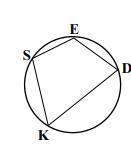
Mathematics, 24.10.2020 14:00 Jasten
Peanut allergies are becoming increasingly common in Western countries. Some evidence points to the timing of peanuts' first introduction in the diet as an influential factor, raising the question of whether pediatricians should recommend early exposure or avoidance. A study enrolled infants with a diagnosed peanut allergy and randomly assigned them to either completely avoid peanuts or consume peanuts in small amounts regularly until they reached 60 months of age. At the end of the study, 18 of the 51 infants who had avoided peanuts were still allergic to peanuts. In contrast, 5 of the 47 infants who had consumed peanuts were still allergic to peanuts.
Do the data indicate that one approach is more beneficial? Follow the four‑step process.
STATE: What is the question we are asking?
A. Does early exposure to peanuts better reduce peanut allergy in children with a known allergy to peanuts?
B. Should all children under the age of 60 months avoid peanuts or only eat them in small amounts?
C. Does early exposure to peanuts in small amounts or complete avoidance of peanuts better reduce peanut allergy in children with a known allergy to peanuts?
D. Should all children under 60 months eat peanuts regularly in small amounts?
PLAN: What plan is the best for this situation?
A. Calculate and compare the number of children with a peanut allergy.
B. Calculate and compare the conditional distributions of the age of the children with a peanut allergy.
C. Calculate and compare the type of peanuts that cause allergies in children under 60 months.
D. Calculate and compare the conditional distributions of allergy among the type of peanut consumption.
SOLVE: Fill in the conditional distributions in the table by entering the numeric entries that correspond to a–d. (Enter your answers rounded to one decimal place.)
Allergy No allergy
Avoid Peanuts a% b%
Consume Peanuts c% d%
a=
b=
c=
d=
CONCLUDE: What conclusion does the data indicate?
A. Both avoidance and consumption of peanuts in small amounts reduced peanut allergy in this study. 89.4% of the group of children with a known peanut allergy that consumed peanuts in small amounts until age 60 months no longer were allergic to peanuts. 64.7% of the children with a known peanut allergy that completely avoided peanuts for 60 months were no longer allergic to peanuts. It appears that exposure to peanuts in small amounts better reduces peanut allergy.
B. There is not enough information to make a conclusion.
C. Both avoidance and consumption of peanuts in small amounts had no effect on peanut allergy in this study. The group of children with a known peanut allergy that consumed peanuts in small amounts until age 60 months and the children with a known peanut allergy that completely avoided peanuts for 60 months were just as allergic to peanuts. It appears that exposure to peanuts in small amounts has no effect on peanut allergy.
D. Both avoidance and consumption of peanuts in small amounts increased peanut allergy in this study. Only 10.6% of the group of children with a known peanut allergy that consumed peanuts in small amounts until age 60 months no longer were allergic to peanuts. 15.3% of the children with a known peanut allergy that completely avoided peanuts for 60 months were no longer allergic to peanuts. It appears that exposure to peanuts in small amounts has no significant effect on reducing peanut allergy.
E. Both avoidance and consumption of peanuts in small amounts reduced peanut allergy in this study. 64.7% of the group of children with a known peanut allergy that consumed peanuts in small amounts until age 60 months no longer were allergic to peanuts. 89.4% of the children with a known peanut allergy that completely avoided peanuts for 60 months were no longer allergic to peanuts. It appears that exposure to peanuts in small amounts better reduces peanut allergy.

Answers: 3


Another question on Mathematics

Mathematics, 21.06.2019 16:00
In the diagram, the ratio of ab to ae is (1/2) . what is the ratio of the length of to the length of ?
Answers: 3

Mathematics, 21.06.2019 19:30
Aproduction manager test 10 toothbrushes and finds that their mean lifetime is 450 hours. she then design sales package of this type of toothbrush. it states that the customers can expect the toothbrush to last approximately 460 hours. this is an example of what phase of inferential statistics
Answers: 1

Mathematics, 21.06.2019 20:20
Complete the input-output table for the linear function y = 3x. complete the input-output table for the linear function y = 3x. a = b = c =
Answers: 2

Mathematics, 21.06.2019 22:00
cassidy wants to cut the yellow fabric into strips that are 0.3 yards wide. how many strips of yellow fabric can cassidy make? yellow fabric 16 yards for $108.00.
Answers: 1
You know the right answer?
Peanut allergies are becoming increasingly common in Western countries. Some evidence points to the...
Questions

Mathematics, 19.03.2021 15:20






English, 19.03.2021 15:30

Health, 19.03.2021 15:30



Mathematics, 19.03.2021 15:30

Mathematics, 19.03.2021 15:30

Physics, 19.03.2021 15:30



English, 19.03.2021 15:30







